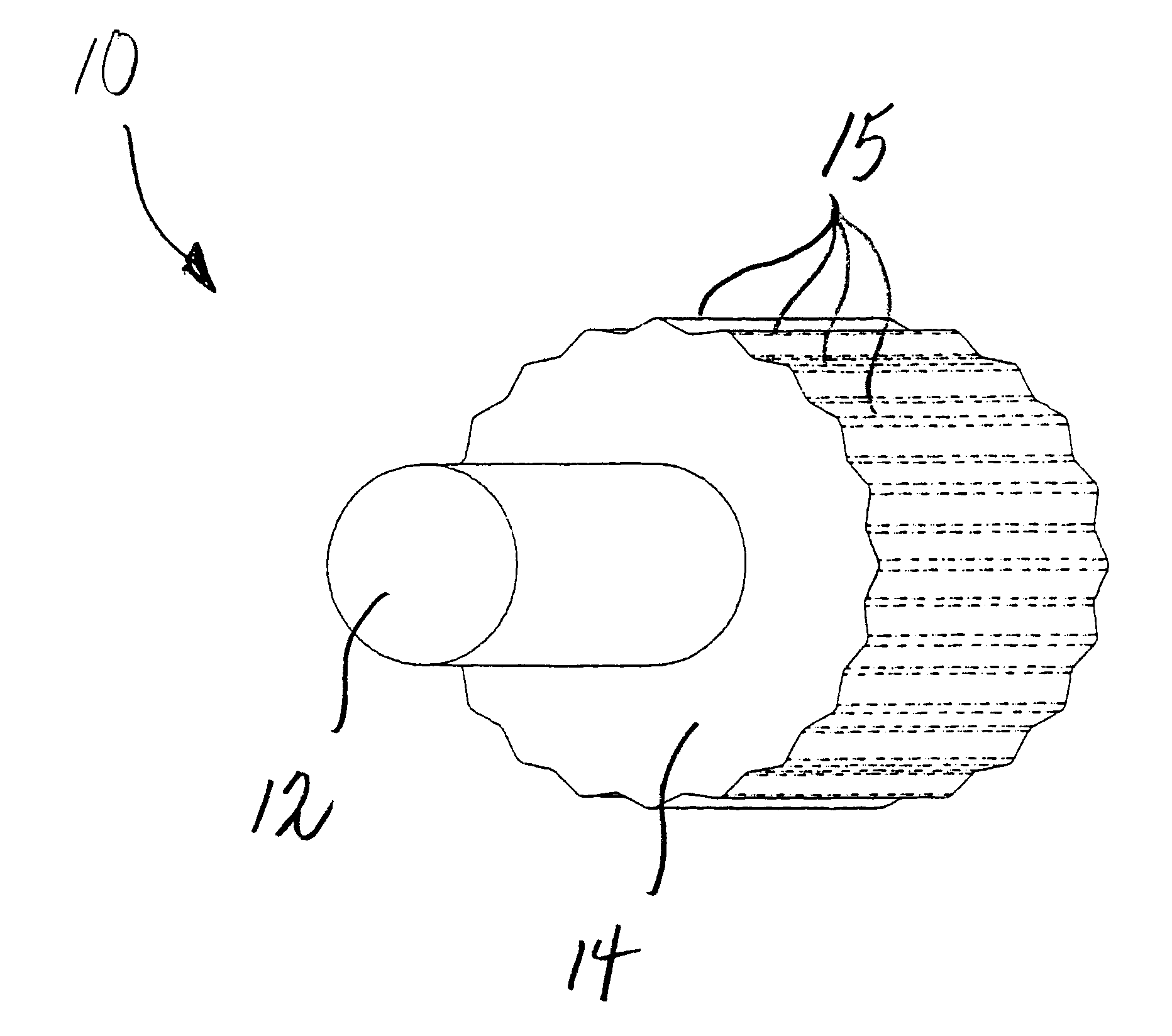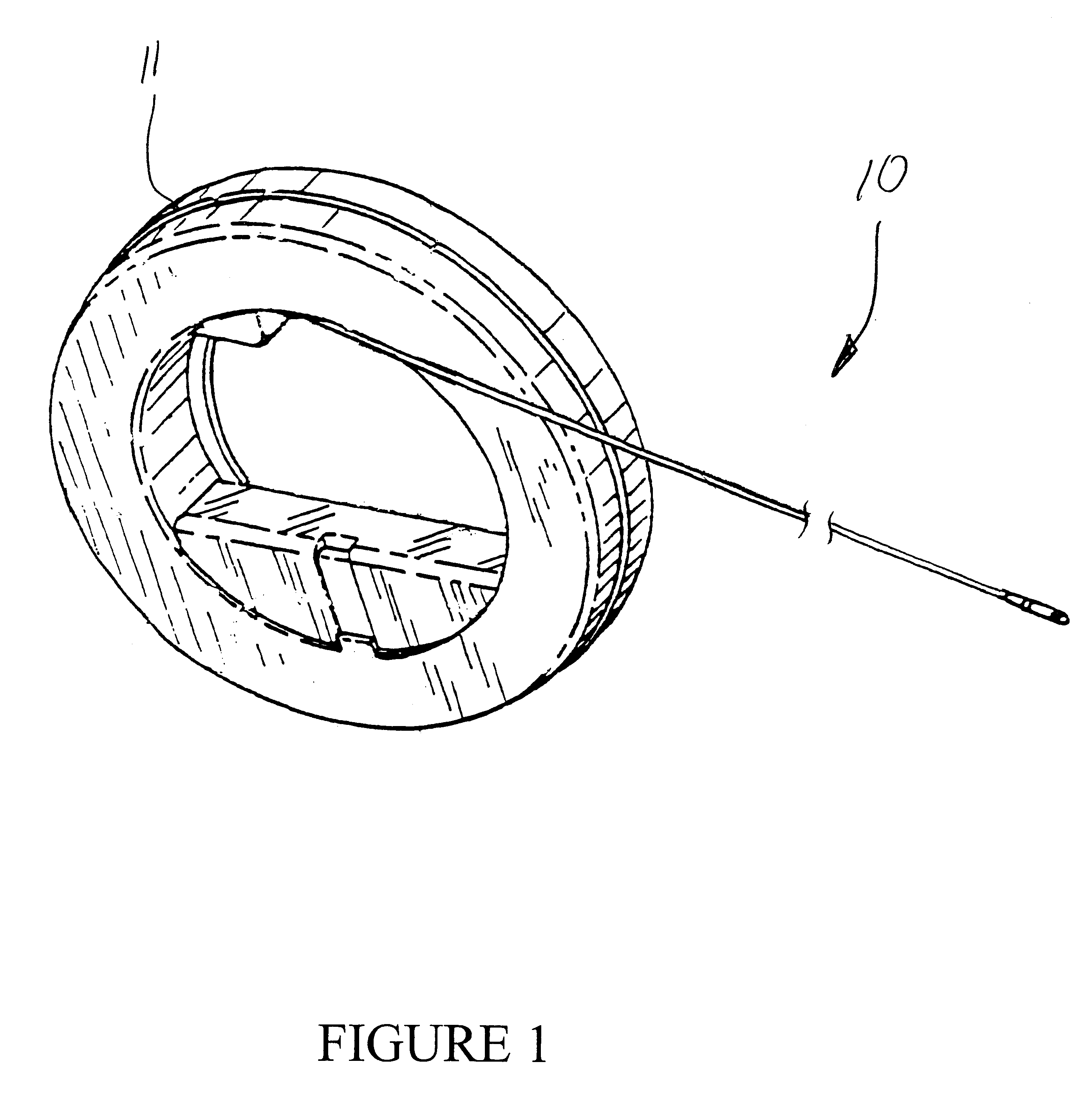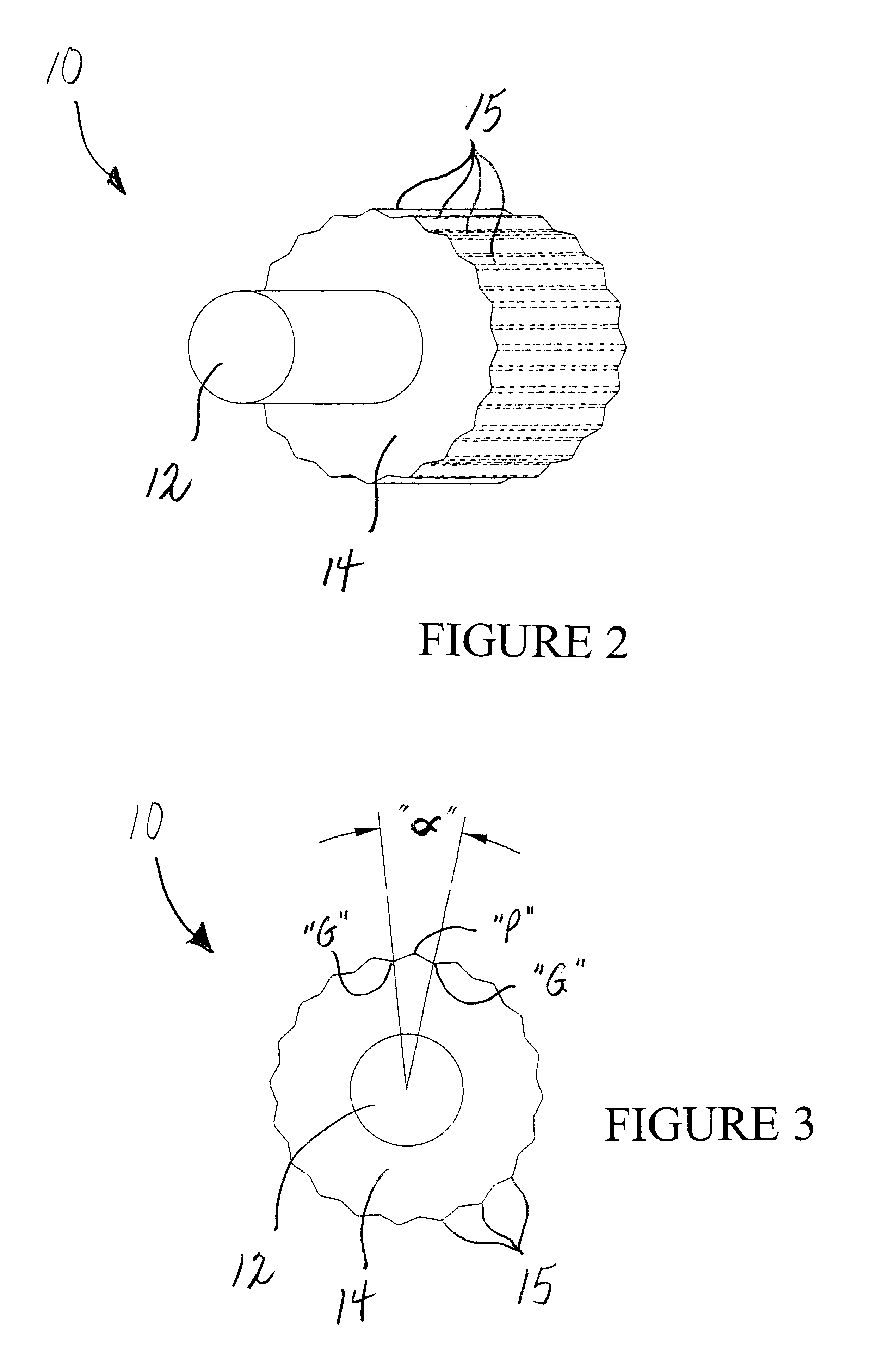Ribbed fishtape
a flexible rod and ribbed technology, applied in the direction of cables, special-purpose vessels, cables, etc., can solve the problems of requiring considerable pulling force, virtually impossible to push through long conduit lengths, etc., and achieve the effect of improving fishability
- Summary
- Abstract
- Description
- Claims
- Application Information
AI Technical Summary
Benefits of technology
Problems solved by technology
Method used
Image
Examples
Embodiment Construction
Referring now specifically to the drawings, a fishtape according to the present invention is illustrated in FIG. 1 and shown generally at reference numeral 10. Fishtape 10 is commonly supplied in a reel, such as reel 11, containing 50 or more feet of tape. Examples of fishtape reels are provided in applicant's prior issued patents, U.S. Pat. Nos. 5,106,056 and 5,340,084. The complete disclosure of these patents is incorporated herein by reference.
Referring to FIGS. 2 and 3, the present fishtape 10 includes a fiberglass core 12 and exterior nylon sheath 14. A number of circumferentially-spaced, longitudinal ribs 15 are formed in the sheath 14, and serve to promote fishability of the fishtape 10 through narrow passageways in buildings and other structures. The longitudinal ribs 15 enhance the column strength and overall stiffness of the fishtape 10. As best shown in FIG. 3, each rib 15 is defined by a point "P" with grooves "G" formed on opposite sides of the point. The ribs 15 create...
PUM
 Login to View More
Login to View More Abstract
Description
Claims
Application Information
 Login to View More
Login to View More - R&D
- Intellectual Property
- Life Sciences
- Materials
- Tech Scout
- Unparalleled Data Quality
- Higher Quality Content
- 60% Fewer Hallucinations
Browse by: Latest US Patents, China's latest patents, Technical Efficacy Thesaurus, Application Domain, Technology Topic, Popular Technical Reports.
© 2025 PatSnap. All rights reserved.Legal|Privacy policy|Modern Slavery Act Transparency Statement|Sitemap|About US| Contact US: help@patsnap.com



